Ecumenism, also called interdenominationalism or ecumenicalism, is the concept and principle that Christians from different Christian denominations should work together to develop closer relationships among their churches and promote Christian unity.
Dr Emil Kazanlár brought the concept to the next level by blending all the major religions as a Tarot deck. The four pillars of the deck, commonly known as the Suits, are distributed between Far East, European, Egyptian and Persian traditions, combining Hinduism, Christianity, Islam and ancient Middle Eastern traditions through the kabbalistic teachings of the Tree of Life. It is a bold and ambitious artistic, intellectual and esoteric endeavour, not only a religious but also a multicultural communion.
Artistically, Dr Emil Kazanlár painted a vibrant deck full of symbols inspired by, but not copying the Rider-Waite tradition. While most modern artists only reinterpret the known patterns, Emil Kazanlár only blended those aspects and elements that fit his vision.
Mystical and historical figures find their home in the deck. Each character adds life and another layer of meaning to the cards. Together, they constitute a mystical, magical universal family. Once you are drawn into the mysteries of the Kazanlar Tarot, it will be difficult to look with the same eye at any other deck.
That being said, we can proceed with a more detailed analysis of the Ecumenical Kazanlar Tarot.
Who is Emil Kazanlár?
Dr Emil Áminollah Kazanlár was born in the territory of ancient Persia, today Iran’s capital, Tehran, and at the age of twenty-three, he moved to his mother’s home country, Hungary.
He studied philosophy, painting, and general linguistics and earned a doctorate in philosophy.
Emil Kazanlár has been teaching esoteric painting and Tarot using his unique method for over thirty years. Numerous exhibitions have been organised from his works both in Hungary and abroad, including Budapest, Esztergom, Szeged and Tata in Hungary, Crissay-sur-Manse in France, Austria, Switzerland and Prague.
The paintings for the Kazanlar Tarot were created between 1988 and 1994.
Dr Kazanlár felt an affinity for the art of divination from his youth. Kazanlár’s imagination was captured in Tehran by a deck of cards painted on wooden boards, which an Armenian diviner used. The naive miniature painter created this deck in a way that would work with white magic: the cards of the Major Arcana were framed with quotations from the Koran to drive away the devil. Later on, Kazanlár did his utmost to find this deck, but it was lost forever for him. Then, after thirty years of study, he spent a decade “repainting” the cards from memory.
His Tarot series was noticed by the Swiss card publisher AGM-Urania at an exhibition in Switzerland.
Initially dubbed Ecumenical Tarot by the publisher, Kazanlár finally opted for the more authentic-sounding Kazanlár Tarot on the advice of H. R. Gieger, the visual designer of the Alien films, who happened to live next door.
Meanwhile, the 90s editions of the deck became collector items.
However, in 2021, the family published a new edition of the deck, and it became available for the Tarot community worldwide. The new edition has black borders and backgrounds compared to the original runs. As with the originals, each card features German, English, Hungarian, and French captions.
Besides the new edition, a consistent guidebook is available in English or Hungarian optionally.
The Hungarian guidebook contains extra tells and various spreads.
The Kazanlar Tarot uniquely combines marvellous art with dense, esoteric content.
Each card is a work of art on its own and a window into another world. Emil Kazanlár painted all the details on each card carefully, using vibrant colours and creating scenes that remind me of the magic tales of One Thousand and One Nights.
Visually, the cards may preserve some of the Rider-Waite graphic standards, but the overall vibe is completely different.
Elements from Pamela Colman Smith’s work can be spotted here and there. For example, the boat in the Six of Swords, the clouds and architecture of The Seven of Cups, the design of the Eight or Ten of Coins, or the mumy and the menacing swords in the Ten of Swords. Yet, most cards represent a departure or a bold rearrangement of the familiar scenes and characters.
While I have seen thousands of artistic decks, only a handful have similar intensity and power.
The secret is the work and knowledge put behind the cards.
Emil Kazanlár perfectly balanced the cards’ external representation and the interior, hidden – esoteric – content.
Nowadays, diversity and inclusiveness are fashionable subjects. However, people have never been more divided and antagonistic.
Emil Kazanlár grew up in a multicultural and diversified religious environment. At a young age, he realised that G_d allowed people to be worshipped in various ways, but different religions’ holy books deal with the same divinity or divine concepts.
The Kazanlar Tarot is built on this realisation and integrates various mystical teachings into a coherent deck.
The basic architecture of the deck is built upon the kabbalistic Tree of Life and the Tetragrammaton.
The philosophical structure is inherited from Éliphas Lévi and relates to the Golden Dawn system.
The four Suits are distributed among the four-letter Hebrew name of God in the Hebrew Bible: JHVH. The four letters, written and read from right to left, are yodh, he, waw, and he.
J is associated with Wands, the first H with Cups, V with Swords and the second H with Coins.
The ten numbered cards are associated with the ten white and black Sefirot. Interestingly, Emil Kazanlár introduced the “black” or “shadow” Tree of Life, dubbed the Tree of Death, for reading the reversals.
Therefore, the Aces are associated with Kether and Rempham, the Twos with Chochmah and Nibbas, the Threes with Binah and Thartac, the Fours with Geburah and Marcolis, the Fives with Sedutah and Azima, the Sixes with Tipheret and Anamelech, the Sevens with Netzah and Negral, the Eights with Hod and Succoth, the Nines with Yesod and Nisroch, and the Tens with Malkuth and Adramelech.
The cards feature captions for both upright and reversal.
However, the colour scheme used for the Suits differs from that of the tradition, with the colours for Wands and Disks being inverted. As a result, Wands are green, Cups are violet (blue), Swords are yellow, and Coins are red.
The most fascinating thing about the deck is the religious and cultural blending.
The Wands are associated with oriental mystical figures such as Siva, Krishna, and Parvati, which are related to Hinduism.
The Suite of Cups is populated with Hungarian historical and folk figures such as Kukoricsa Jancsi or Matyas kiraly, but also Saint-Germain, representing Christianity.
Mythological figures of ancient Egypt represent the Swords. Thoth, Nut, Isis and other deities are represented through the Suit.
Finally, the Disks are associated with Persian historical and mythological figures and various traditions. The Suit of Coins is less about people but activities. Beside Aladin, Little Shah Abbas II and Sinbad the Sailor, we have a whirling dervish dancer, a woman shaking a tree to make it drop its fruits or a family signifying happiness.
While Emil Kazanlár preserved the classic numbering of the Major Arcan, Justice is 8, and Strength is 11, the 22 cards have been divided into 7+7+7+1. The extra card out of sequence is the Fool.
The three-folded Major Arcana represents the Seven Heavenly or Theological Virtues, the Seven Earhtly or Capital Virtues, and the Seven Deadly Sins.
Among the Theological Virtues are Temperance, Strength and Justice. Among Capital Virtues are the Hermit, the Chariot and the Magician, while among the Deadly Sins are the Devil, the Hanged Man and the Lovers.
The deck has two additional cards, Intuition and Reason, representing a woman and a man, respectively female or male querent.
I left many secrets and hidden gems of the deck undisclosed. They are more delicious and rewarding if you discover them by yourself. Each esoteric Tarot deck is a learning journey, and the Ecumenical Kazanlar Tarot has many lessons to offer.
Special thanks to Rácz Zoltán and Kazanlár Szilvia Fatima.
Written by Attila Kárpáthy
Available at: kazanlartarot.com
Facebook page: facebook.com/kazanlar



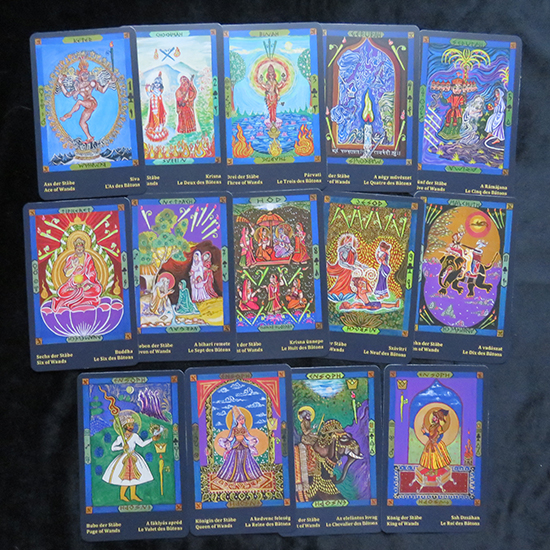
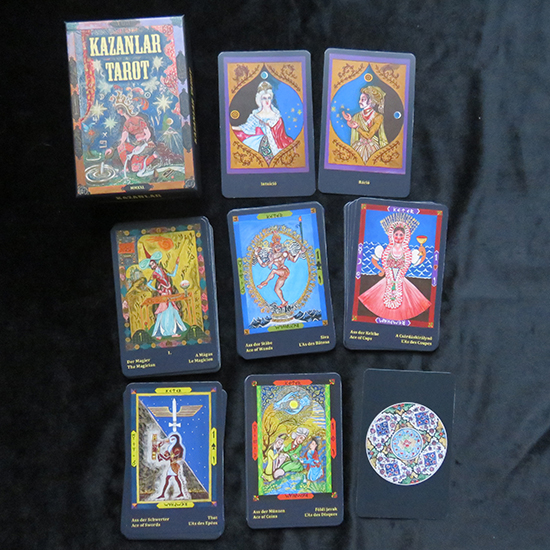
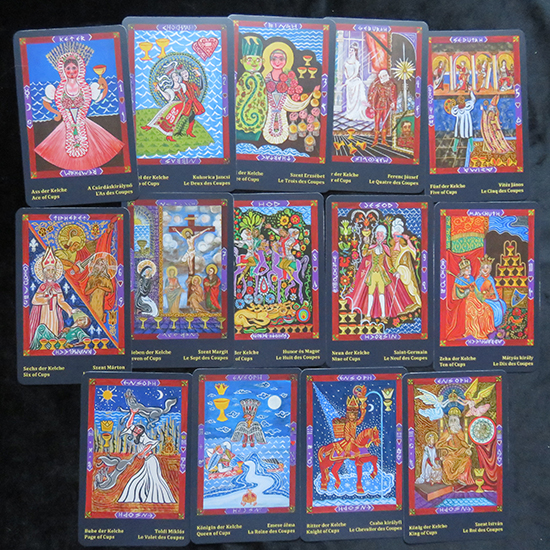
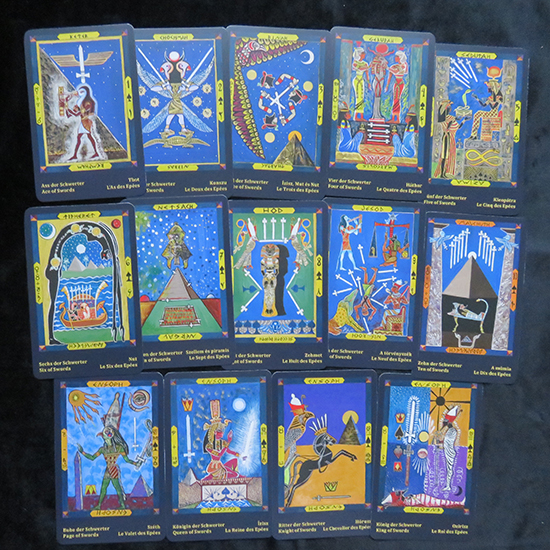
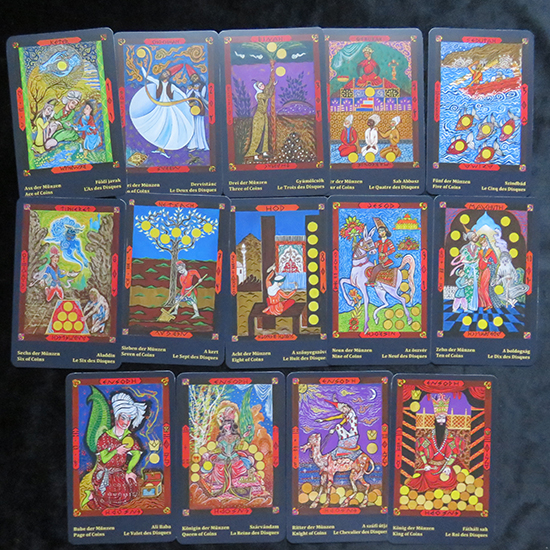
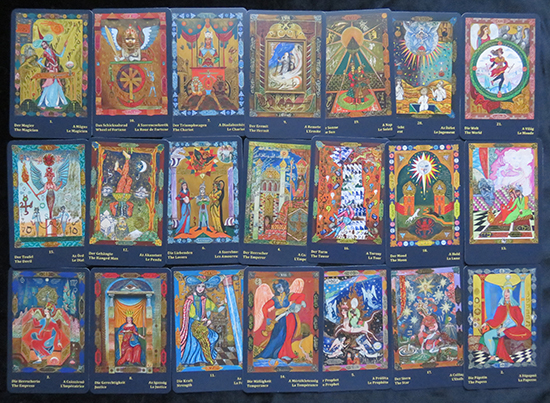

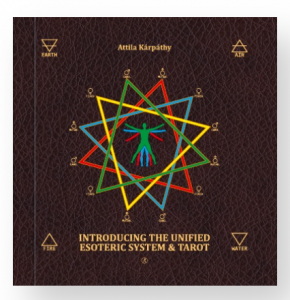
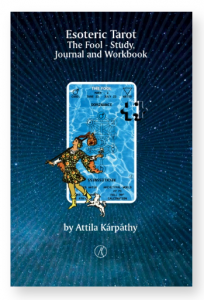
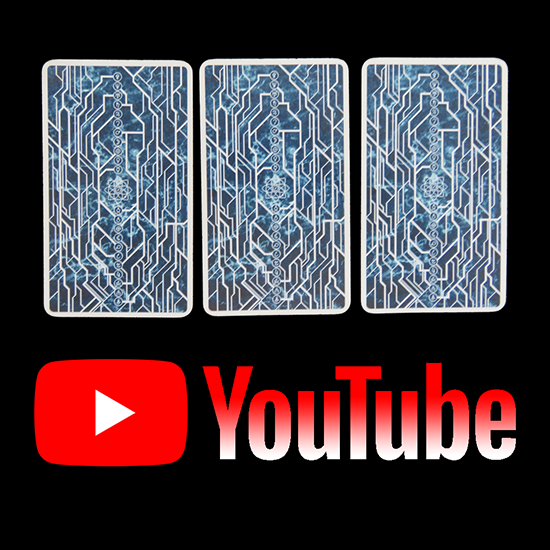

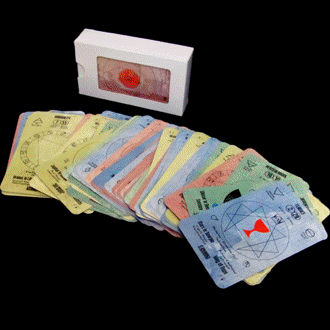
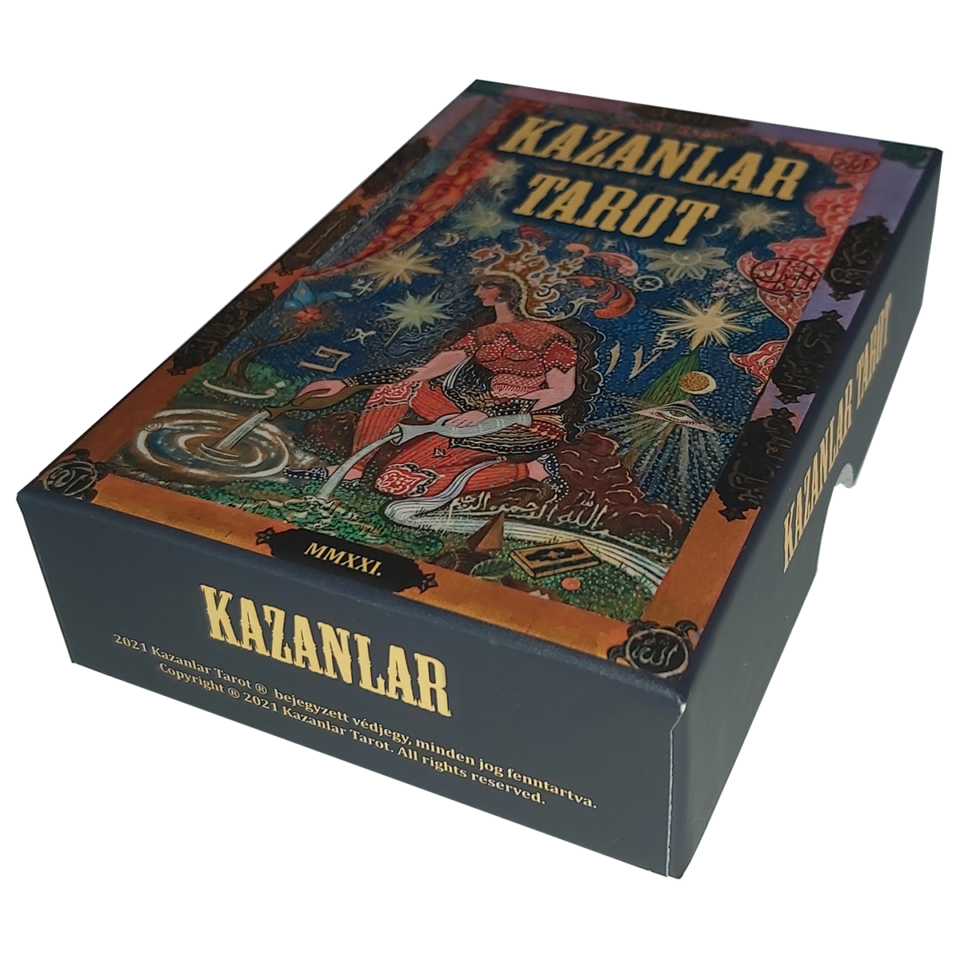
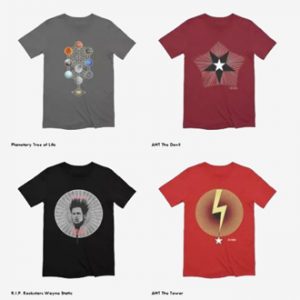
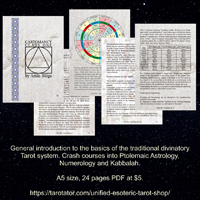
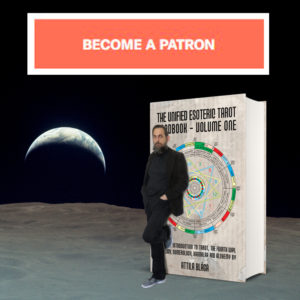
0 comments on “Kazanlar Tarot”
1 Pings/Trackbacks for "Kazanlar Tarot"
[…] FULL REVIEW HERE. […]